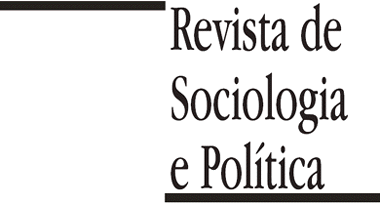ABSTRACT
Introduction:
The theory points out to the existence of likely links between party ideology and migratory policies, stating that, in principle, values associated with the right, based on nationalism, tend to, restrict immigration dynamics more than those linked to the axiology of the left, anchored in universalism. Does party ideology affect immigration patterns in the European Union? This paper tests the hypothesis that the greater the values in ideology (right-wing governments), the smaller the number of migrants to that specific country.
Materials and Methods:
The research design replicates secondary data from both a parliament and government database (ParlGov) and the Comparative Manifesto Project. We also use data from the Global Bilateral Migration Database and Bilateral Migration Matrix. Besides the descriptive statistics, we examine the relationship between ideology and migration flows. We estimated two regression models to deal with the following dependent variables: net migration and refugee population by country or territory of asylum.
Results:
Using data from ParlGov, Manifesto, and QoG, descriptive statistics has stressed a very heterogeneous cartography of political features, ideology, and migration in European Union countries. The first regression analysis using aggregate data suggests that the greater the values of ideology per country (right-wing oriented), the lower the number of people entering that country. However, the findings from our disaggregated statistical analysis, particularly Model 1, indicate no effect of cabinet ideology on net migration. As for the refugee category for immigrants, our results suggest that right-oriented national governments are less receptive to refugees. Model 2 stated that a one-point increase in ideology is associated with a 13% average reduction in the number of refugees entering the country.
Discussion:
This study advances our current understanding about the relationship between party ideology and immigration patterns. Nonetheless, the results of the regression analysis show limited evidence in favor of our hypothesis that the more to the right of the ideological spectrum governments are, the lower the number of refugees they will accept. However, this analysis is only meant to show a relationship between ideology and migration. Causal claims should be interpreted with caution.
Keywords:
European Union; government; ideology; migration; political parties

 Source: Elaborated by the authors. Data from ParlGov.
Source: Elaborated by the authors. Data from ParlGov.
 Source: Elaborated by the authors. Data from Manifesto.
Source: Elaborated by the authors. Data from Manifesto.
 Source: Elaborated by the authors. Data from Manifesto.
Source: Elaborated by the authors. Data from Manifesto.
 Source: Elaborated by the authors. Data from Manifesto.
Source: Elaborated by the authors. Data from Manifesto.
 Source: Elaborated by the authors. Data from QOG and ParlGov.n = 27, r = -.439, p-value = .022.
Source: Elaborated by the authors. Data from QOG and ParlGov.n = 27, r = -.439, p-value = .022.
 Source: Elaborate by the authors. Data from QOG and ParlGov.n = 27, r = -.196, p-value = .328.
Source: Elaborate by the authors. Data from QOG and ParlGov.n = 27, r = -.196, p-value = .328.
 Source: Elaborated by the authors. Data from QOG and ParlGov.
Source: Elaborated by the authors. Data from QOG and ParlGov.